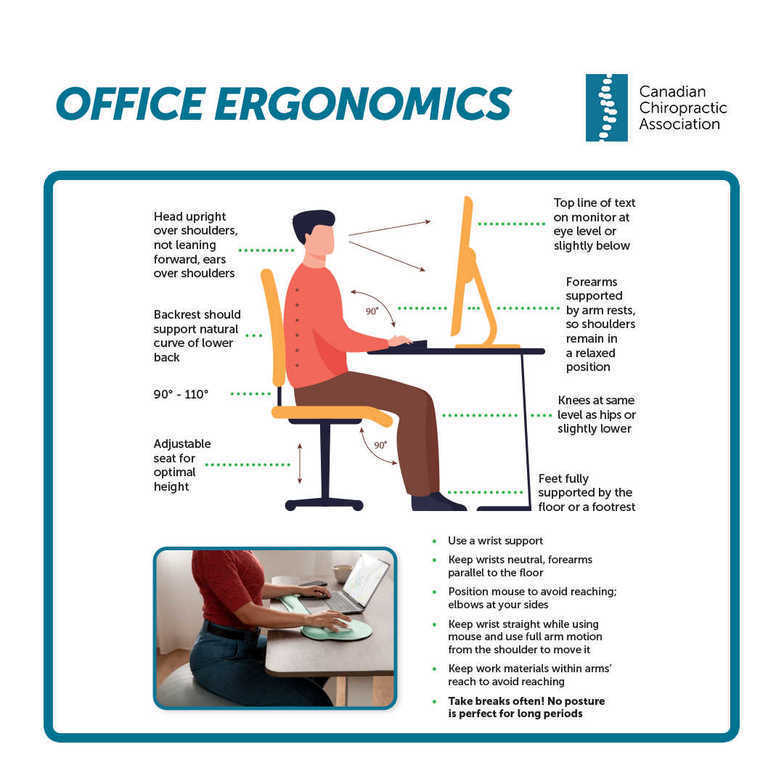
In today's digital age, many spend hours sitting at our desks, often unaware of its toll on our bodies. Poor office ergonomics can lead to aches, pains, and long-term health issues. But fear not! Simple adjustments can transform your workspace into a haven of comfort and productivity. Let's delve into the essentials of proper office ergonomics:
1. Chair Setup: Finding Your Perfect Seat
Your chair is the cornerstone of office comfort. Ensure it provides adequate lumbar support to maintain your spine's natural curve.
· Adjust the height so that your feet rest flat on the floor and your hips and knees form a 90-110-degree angle.
· If available, armrests should be positioned to support your arms comfortably, allowing your shoulders to relax. Elbows should rest at 90 degrees, and the armrests should be positioned close to your body.
· The seat pan should be long enough to accommodate 2-3 fingers between it and your calves, and the angle should be parallel to the floor.
· The backrest should support upright sitting with a 90-110-degree hip angle.
2. Desk Height: The Foundation of Productivity
Your desk height plays a crucial role in maintaining proper posture. When seated, your elbows should rest comfortably at your sides, forming a 90-degree angle. Adjust the desk height accordingly to achieve this alignment. If your desk is too high or too low, consider using an adjustable keyboard tray to find the optimal position.
3. Monitor Setup and Position: Eye-Level Bliss
Position your monitor directly in front of you, at arm's length away. The top of the screen should be at or slightly below eye level, preventing unnecessary strain on your neck. If needed, use a monitor stand or adjustable arm to achieve the ideal height and angle. Remember to take regular breaks to rest your eyes and prevent eye fatigue.
4. Ergonomic Mouse Choices: Click with Comfort
Investing in an ergonomic mouse can make a world of difference in your comfort and productivity. Look for a mouse that fits comfortably in your hand, providing adequate support for your wrist and fingers. Vertical mice, trackballs, and mice with adjustable sensitivity are popular choices among those seeking ergonomic excellence.
5. Keyboard Options: Typing Toward Comfort
Your keyboard should support natural wrist alignment to minimize strain and discomfort. Consider an ergonomic keyboard with a split design and tented keys, allowing your wrists to maintain a neutral position. Wrist rests can further enhance comfort by providing support during long typing sessions.
6. Sit-Stand Desks Setup and Options: Embrace Movement
Sit-stand desks allow users to alternate between sitting and standing throughout the day, promoting better circulation and reducing the risk of sedentary-related health issues. The optimum starting ratio is around 5 minutes of standing with 25 minutes of sitting. This can be very personal, but the real strength of a sit-stand desk is the flexibility, so during your day, make sure to take advantage of both sitting and standing, not just one or the other. Don’t wait to stand until you are sore and don’t stay standing until you get tired. When using a sit-stand desk, adjust the height so that your elbows form a 90-degree angle when sitting and standing. Anti-fatigue mats can provide additional support while standing.
In conclusion, proper office ergonomics are essential for maintaining a healthy and productive workspace. By implementing these simple adjustments to your chair setup, desk height, monitor position, mouse and keyboard choices, and sit-stand desk options, you can create an environment that supports your well-being and enhances your performance. Listen to your body and adjust to ensure long-term comfort and health.





